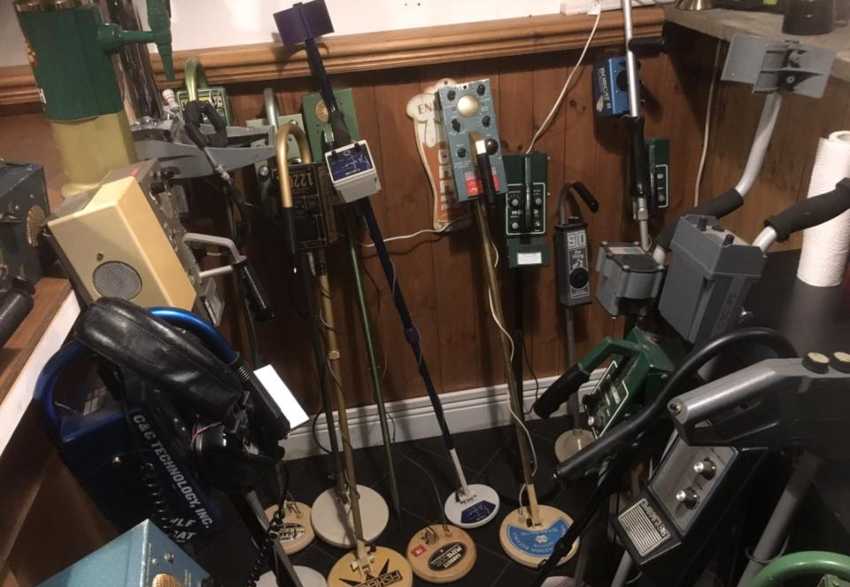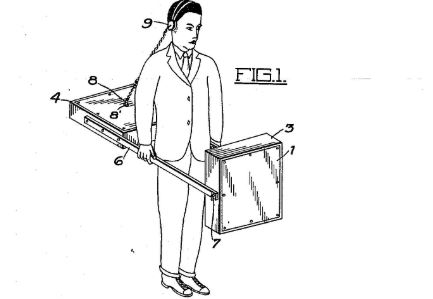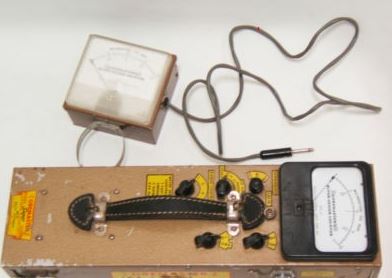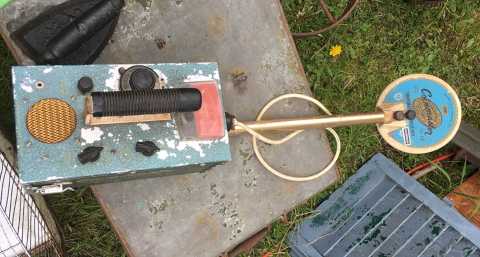
Old metal detectors are not as bad as you might be thinking, they can still operate well and pick up valuable finds …
… In this post I will provide you with some helpful information about these machines … In addition to a short comparison with the new detectors we have on the market these days.
I will even list some old detectors brands that you might find and how good they perform!
So Stay Tuned.
(By the Way, I’ve just finished writing these metal detecting tips … I highly invite you to check them out to move your detection capabilities to the next level!)
How did old metal detectors work?
The first working model was built towards the end of the 19th century. The early detectors were crude, working only to a very limited degree, and also used a lot of battery power.
In 1874, the first model was created by Gustave Trouve who developed a hand-held detector for locating and extracting metallic objects such as bullets from human patients.
Alexander Graham Bell then went on to build a model that was designed to save US President James Garfield after he was shot. Unfortunately, though, the bullet could not be found and President Garfield died of infection from his wounds.
Even though the President could not be saved, the model of the detector went on to become the prototype on which all other detectors from there on were built. The initial detectors were huge in size, complicated to use, and ran on vacuum tubes.
During the time of World War II, Gerhard Fisher, the founder of Fisher Detectors, discovered that the radio beams he was using to work on his navigational systems, were getting distorted each time there was an ore bearing rock in the nearby area.
He then reasoned out that such technology, on a smaller scale, could be used as a metal detector and in 1925, Fisher got the first patent on the world’s first portable metal detector.
Are old metal detectors as good as new ones?
The old models used to work, but not with great accuracy. Since they were so large in size, they could not be taken from one place to another and were limited to only the place where they were placed.
Furthermore, the older models would often get confused if there were any other metal objects in the vicinity and stopped working correctly.
What brands were producing old models back then?
Fisher was the very first company to start making the portable detection devices. Following Fisher, Garrett Electronics also came into the market.
The founder of Garrett, Charles Garrett, created a machine that eliminated oscillator drift.
He also designed several unique search coils, which further revolutionized the design of metal detectors.
Best old metal detectors
1. The Metalloscope

This was the first working detector designed by Gerard Fisher. It was also the first handheld model.
It had two large, flat wooden boxes that contained simple copper coils, vacuum tubes, and other assorted components.
The machine was nicknamed M-Scope as it became more popular. It was especially popular amongst geologists, who used it to locate ore.
Utility companies also used it to pinpoint buried pipes, and law enforcement used it to find hidden weapons.
2. Oremaster Geiger Counter by White’s Electronics

This had three thin-walled tubes that were housed inside a case in the front of the machine. The detector output was indicated by a meter reading or an audio signal, but not both.
3. BFO (Beat Frequency Oscillator) by Charles Garrett

The device included two coils of wire…
…One large coil in the search head and a smaller coil inside the control box. Each coil was connected to an oscillator, which generated pulses of current per send.
The frequency of these pulses was slightly offset between the two coils. There was a receiver placed within the control box, which picked up the radio waves, creating an audible tone.
Common problems with the Old detectors …
The biggest problem that detectorists faced with the old metal detectors were the lack of separate tones for indicating different metals!
Since there was only one tone to indicate the detection of a target, there was no way to tell if the target was of any value or if it was just trash.
Of course, before the advancements in technology, there was no way to rectify this problem.
Another problem that the old metal detectors faced was that of dealing with ground mineralization. Millions of compounds present in the ground could drive the older detectors crazy and since not many people were aware of iron being present in the soil at that time, they would go ahead with digging and finding nothing.
Again, this problem had no solution back then!
False signals were also a common problem with the older models. Most of the times this was because of improper swinging because detectorists were not very aware of how to use a detector effectively.
Keep in mind that bumping the ground with your detector will cause it to give a false signal. It is best to keep the search coil of the older detectors as close to the ground as possible, but without scraping it, to avoid getting false signals.
Another problem is the weight, older models tend to be much
Final Thoughts …
What I want you to keep in mind is that old detectors are not that bad and are a good option if you want to get a first taste with the hobby …
… However, if you are really serious and want to acquire your first machine, then I highly invite you to check these tips on how to choose your first detector!
